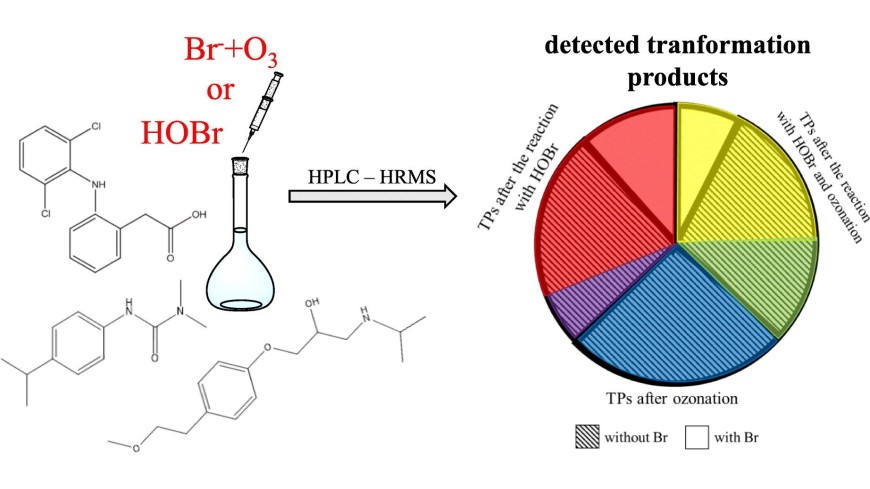New Publication in STOTEN
Bromide strongly influences the formation of reaction products during the ozonation of diclofenac, metoprolol and isoproturon
2022/02/03
Vanessa Wirzberger, Valentina I. Merkus, Michelle Klein, Lotta L. Hohrenk-Danzouma, Holger V. Lutze, Torsten C. Schmidt

Bromide as an omnipresent matrix component in wastewater can react with ozone to form hypobromous acid (HOBr). This secondary oxidant can subsequently react with micropollutants but also with formed intermediates. Therefore, bromide and especially HOBr can highly influence the formation of transformation products (TPs). This has already been reported for the ozonation of N,N-dimethylsulfamide leading to the formation of the cancerogenic N-nitrosodimethylamine only in bromide containing waters. In this study, the influence of different bromide and ozone concentrations on the formation of TPs during the ozonation of isoproturon (ISO), metoprolol (METO) and diclofenac (DCF) were investigated. Additionally, TPs were identified, which are formed in the direct reaction of the micropollutants with HOBr with and without subsequent ozonation. The results showed that even if the reactions of ozone with the substances should be favored bromide can highly influence the formation of TPs already at low concentrations. In summary, new TPs after the reaction with HOBr (and subsequent ozonation) could be postulated for ISO, METO and DCF. This underlines that the present water matrix can have a high influence on the formation of TPs and that these mechanisms need to be investigated further.
